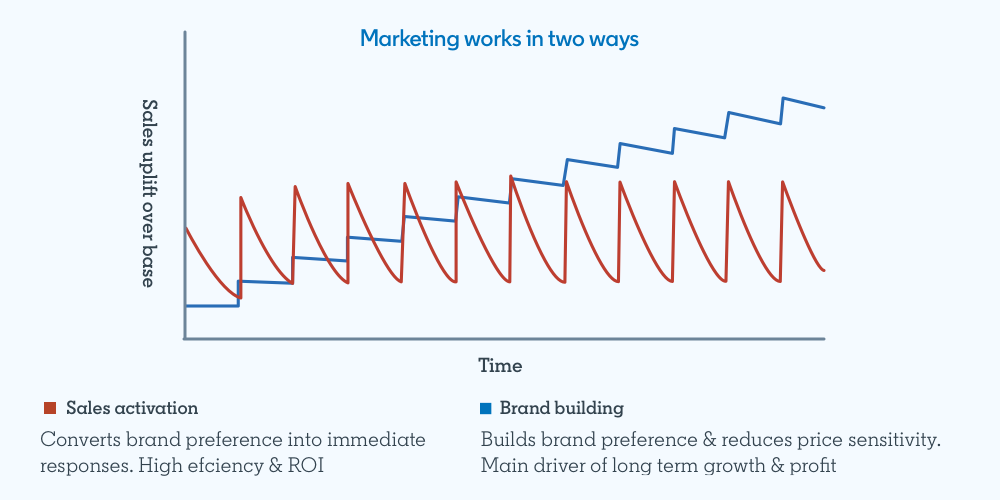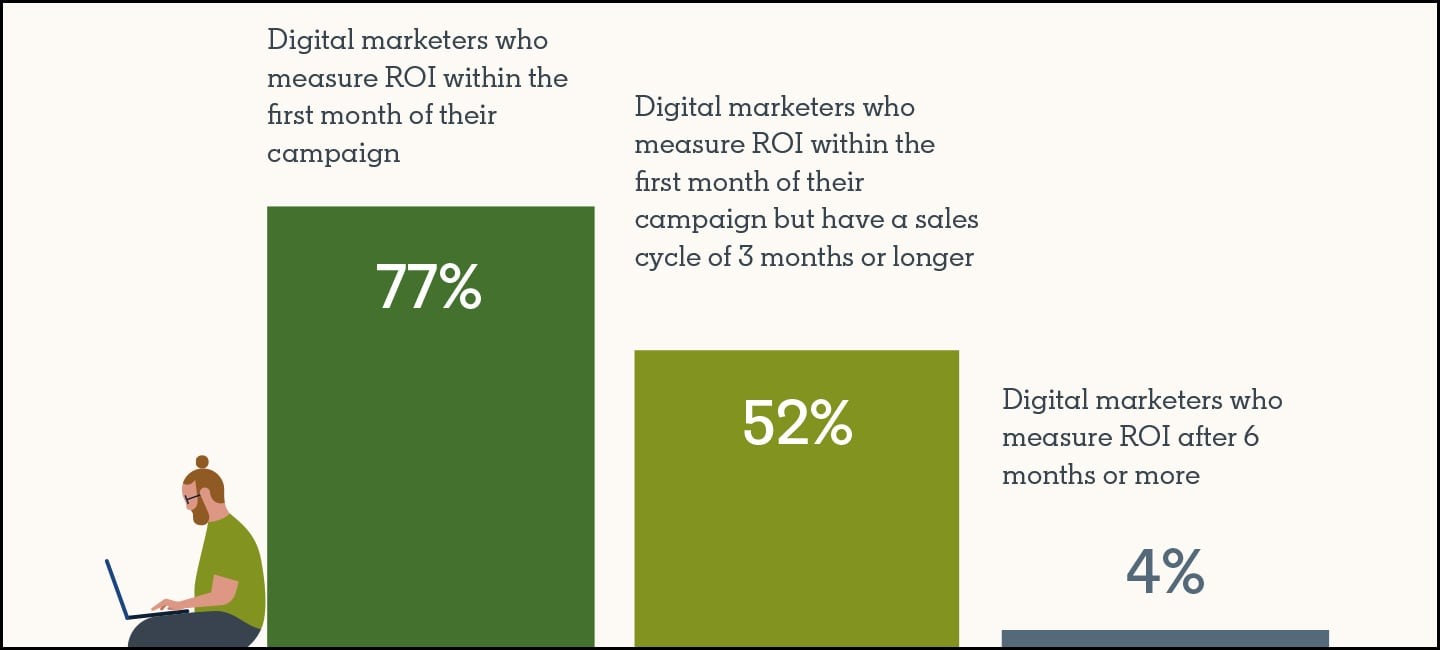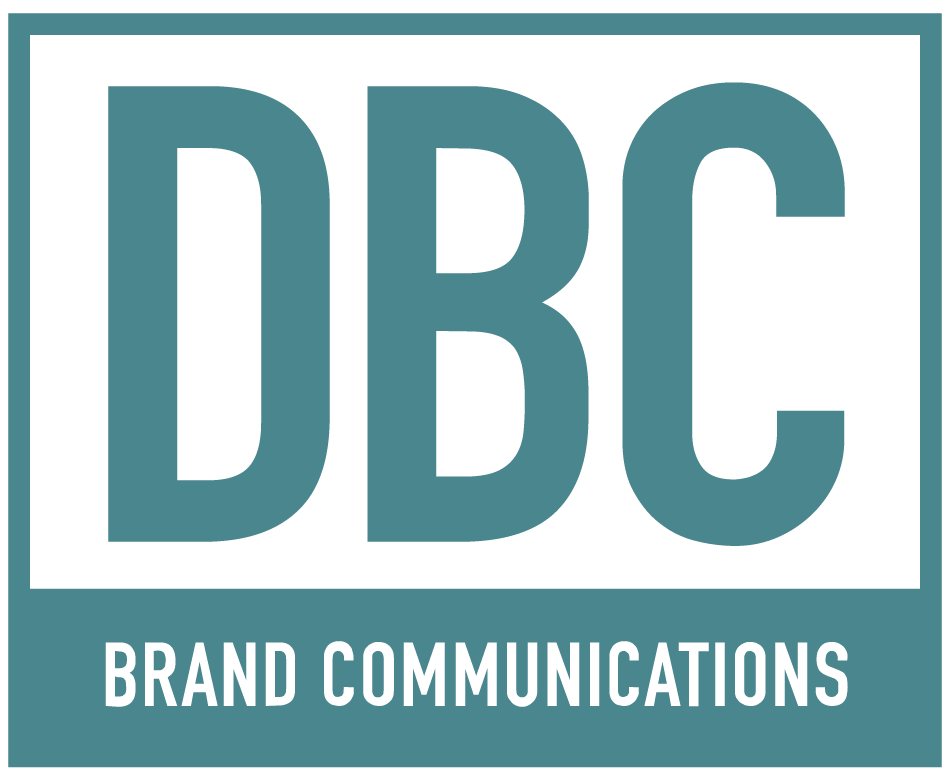Understand how to better define ROI and the metrics that can show the impact of brand investments.
In some industries, proving ROI of marketing efforts is challenging, as it’s not as simple as “advertisement + buyer = sale.” That’s especially true in B2B marketing, where the impact of marketing efforts isn’t always seen with an immediate sale.
In a recent study by LinkedIn’s B2B Institute, data shows, “the most effective tech businesses for generating leads are those that put the greatest emphasis on brand marketing. They’re able to inspire anonymous buyers at scale, build momentum for their solutions with their target accounts, and start engaging and building familiarity before they reach out for contact details. As a B2B tech marketer, the business case for building brands has never been stronger.”

Source: LinkedIn B2B Institute, “The 5 Principles of Growth in B2B Marketing”
The challenge for many B2B marketers is that, while the evidence is clear, results within their own business have greater impact on the perceptions of other leaders within the organization. Sales and client service leaders need to show more immediate results. But when an organization’s sales cycle is 6 months (or more), measuring the effectiveness of brand efforts within 30 days of a campaign is not effective nor an appropriate way to demonstrate the value marketing brings.

Source: LinkedIn B2B Institute, “The 5 Principles of Growth in B2B Marketing”
A change B2B marketers need to make is clarifying the definition of “ROI” within their organizations. LinkedIn succinctly captures the positioning that needs to occur: “The only real measure of marketing ROI is the financial return generated by your marketing efforts during the sales cycle, divided by the cost of your marketing investment during the sales cycle.”
Repositioning your organization this way may take some time. In the meantime, a few things B2B marketers can do to reassure their internal stakeholders that marketing efforts are working as intended and building towards growth:
- Deploy tracking studies that monitor brand sentiment and brand lift
- Gather social engagement and social listening metrics
- Engage search metrics for lifts in branded search
While these metrics won’t show the impact on the bottom line (that will come in proper time against the sales cycle), they will help colleagues understand and better support B2B marketing efforts.
If you need help with brand platform development and execution, reach out to see how we can help prepare your team for success in 2024.
